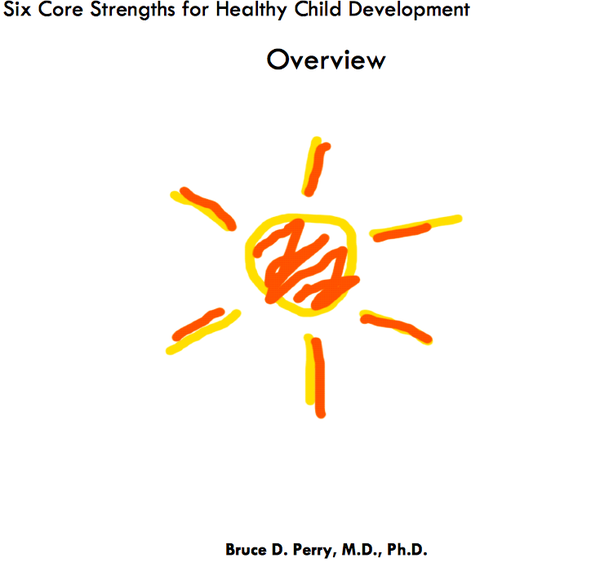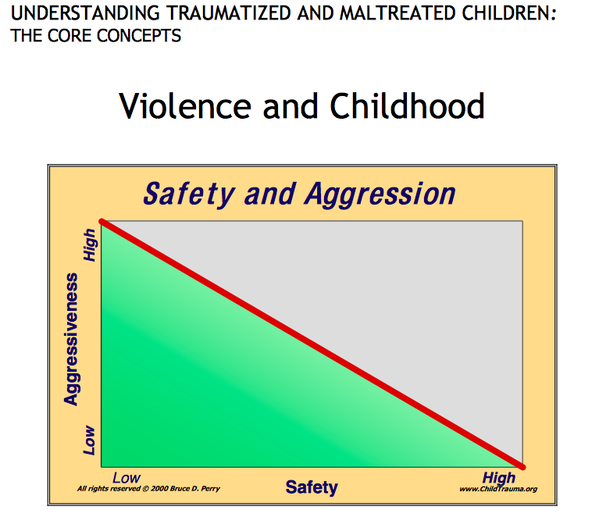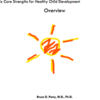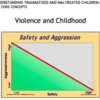I wanted to put in links to great materials from Dr. Bruce Perry, MD, from Child Trauma Academy. I will be taking notes to share at our meeting on Thursday. There are two great lectures in this series (they may be older but the information is still very applicable).
This information can help us learn what happens to maltreated and traumatized children and what we can do to protect, nurture and help these kids learn. In the clips section, I will place some of Dr. Perry's videos which are highly educational from his "Seven Slide Series".
Series 2: Six Core Strengths for Healthy Child Development by Dr. Bruce Perry from the Child Trauma Academy:
Series Introduction
The origins of this series, Six Core Strengths for Healthy Child Development, came from the work of the ChildTrauma Academy in the area of violence in childhood. School shootings, youth on youth violence, seemingly senseless murders, the increase of disturbed and aggressive behaviors in young children and the continuous bath of violent imagery in the media all pushed us to this work. Our group has seen the impact of violence in many ways; children and families gutted by violence – dozens of children, for example, who witnessed their parents being killed. We have work with, and tried to understand and help children who commit violence including murder; we have worked with hundreds of children altered by witnessing domestic violence and hundreds more who have witnessed community violence – gang shootings, random crime, war, genocide. Much of what we learn from these children and their families is outlined in our first training series, Understanding Maltreated and Traumatized Children. And much of what we have learned about how to protect, nurture and educate children is outlined in this series.
The focus of this Series, however, is not violence; the focus is health. We believe that health promotion is violence prevention. If a child develops the capacity to be humane, his likelihood for committing violence decreases and his likelihood to be resilient following exposure to violence increases. This series is about the development of six of core strengths that can help promote health and decrease risk for a host of emotional, social, behavioral and cognitive problems.
Here is the Link to Part 2 PDF: http://www.lfcc.on.ca/Perry_Six_Core_Strengths.pdf (There is an overview of the "strengths" and red flags and to things educators can do to help these children having trouble with the 6 core strengths.
The First in the Series is Titled "Understanding Maltreated and Traumatized Children"
Childhood is a dangerous time. For centuries, children--the most vulnerable members of our species--have struggled to survive this harsh world. For infants and children, survival is dependent upon adults, most typically, the nuclear family. It is in the family setting that the child is fed, clothed, sheltered, nurtured as well as educated - directly and indirectly - in the language, beliefs, and value systems of the culture. It is in the family setting in which the non-genetic ‘DNA’ of the culture is transmitted from generation to generation, allowing the amazing process of socio- cultural evolution.
When the child’s development is characterized by structure, predictability, nurturing, and enriching emotional, social and cognitive experiences, a vulnerable and powerless infant can grow to become a happy, productive, insightful and caring member of society -- contributing to us all. Sadly, few families and communities can provide this idealized early life. Indeed, it is in the familial incubator that children are most frequently manipulated, coerced, degraded, inoculated with destructive beliefs, and exposed to violence.
This chapter will describe how children survive in a ‘vortex’ of violence: persisting threat resulting in persisting fear. Persisting fear and adaptations to the threat present in the vortex of violence alter the development of the child’s brain, resulting in changes in physical, emotional, behavioral, cognitive, and social functioning. These changes in the developing child, in turn, contribute to the trans- generational cycle of violence as these young children become adolescents--and finally, the adults that shape our society, the adults that choose and determine our cultural values, the adults that raise the next generation of children in a new intra- generational vortex of violence.
Just from these PDF's we can learn a lot to help our kids. Here is a link to the First PDF in the Series by Dr. Bruce Perry, MD. I will have summary notes from both series for our meeting this Thursday. http://www.lfcc.on.ca/Perry_Co...ce_and_Childhood.pdf
Looking forward to seeing everyone this Thursday at 4 pm at Thunder Bay Jr. High.
Tina





Comments (3)